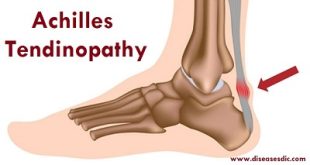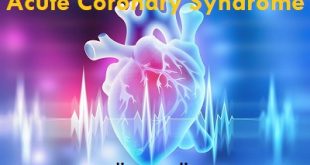Definition
Adult-onset Still’s disease, sometimes known as AOSD, is a rare type of inflammatory arthritis. As the name suggests, it can only be diagnosed in adults. Its name comes from another condition, Still’s disease, which is also known as systemic juvenile idiopathic arthritis (JIA). Systemic JIA is only diagnosed in children. AOSD is generally thought to be the same condition as systemic JIA, but there are some differences between them. Adult-onset Still’s disease is an autoimmune condition. This means that the condition is caused by your body’s immune system. The immune system protects us from infection and other threats to the body, but in AOSD it attacks your own body by mistake. AOSD can cause pain and stiffness in your joints, as well as inflammation in other areas of your body.
Epidemiology
Adult-onset Still’s disease is a very uncommon disease. Its annual incidence has been estimated to be 0.1 to 0.4 cases per 100,000 people in Europe. Females are affected slightly more than males. It has bimodal age distribution, the first peak between the ages of fifteen to twenty-five and the second between thirty-six to forty-six. However, about three-quarters of the patients report the onset of disease between sixteen and thirty-five years of age.
Adult-onset Still’s Disease risk factors
The main risk factor for adult Still’s disease is age. The disease has two occurrences in adults: first in the age between 15 and 25 and then again from 36 to 46 years. Both genders have equally the same risk of developing the disease. Furthermore, multiple cases from the same family are rare thus it is not likely that the disease is hereditary.
Causes of Adult-onset Still’s Disease
The main risk factor for adult Still’s disease is age. The disease has two occurrences in adults: first in the age between 15 and 25 and then again from 36 to 46 years. Both genders have equally the same risk of developing the disease. Furthermore, multiple cases from the same family are rare thus it is not likely that the disease is hereditary.
Symptoms of Adult-onset Still’s Disease
Usually, the first symptoms include a fever that spikes to 102.2 degrees Fahrenheit or higher once or twice a day and a pinkish or salmon-colored rash on the arms, legs, chest, back and abdomen. The rash disappears when the fever drops. The rash might or might not be itchy. Other symptoms can include:
- Sore throat
- Swollen lymph glands in the neck
- Fatigue
- Headache
- Abdominal pain
- Weight loss
A few weeks after these symptoms, your muscles and joints, especially knees and wrists, start swelling, stiffening and aching. The disease can also affect the ankles, shoulders, elbows and fingers. This phase lasts about two weeks.
Pinkish or salmon-colored rash on the arm
Adult-onset Still’s Disease complications
A rare form of the disease, called macrophage activation syndrome, can be very severe with high fevers, severe illness and low blood cell counts. The bone marrow is involved and biopsy is needed to make the diagnosis.
Other complications may include:
- Arthritis in several joints
- Liver disease
- Pericarditis
- Pleural effusion
- Spleen enlargement
Diagnosis and test
There is no single test your doctor can do to confirm that you have Still’s disease. Instead, they’ll gather information using:
- Your symptoms
- Physical exams
- Blood tests to see if you have other issues like infection or cancer
- Ultrasound of your abdomen
- CT scan
- X-ray
Imaging tests like ultrasounds, X-rays, and CT scans can help your doctor see if the disease damaged any of your organs.
Treatment and medications
Doctors use a variety of drugs to treat adult Still’s disease. The type of drug you’ll take depends on the severity of your symptoms and whether you have side effects.
Nonsteroidal anti-inflammatory drugs (NSAIDs): Over-the-counter NSAIDs, such as ibuprofen (Advil, Motrin IB, others) or naproxen sodium (Aleve), may help with mild joint pain and inflammation. Stronger NSAIDs are available by prescription. NSAIDs can damage the liver, so you may need regular blood tests to check liver function.
Steroids: Most people who have adult Still’s disease require treatment with steroids, such as prednisone. These powerful drugs reduce inflammation, but may lower your body’s resistance to infections and increase your risk of developing osteoporosis.
Methotrexate: The medication methotrexate (Trexall) is often used in combination with prednisone, which allows the prednisone dose to be reduced.
Biologic response modifiers: Drugs such as infliximab (Remicade), adalimumab (Humira) and etanercept (Enbrel) have shown some promise, but their long-term benefit is still unknown. If other medications haven’t worked, your doctor may suggest trying anakinra (Kineret), tocilizumab (Actemra) or rituximab (Rituxan).
How to manage AOSD?
Rest as needed. You may feel more tired than usual. Try not to do too much during the day. You may need to rest your hands or wrists if you work on a computer or
Manage stress: Stress is the main trigger for AOSD flares. Try listening to music, talking to someone, or doing things that make you feel calm. Talk to your healthcare provider if you are having trouble managing stress.
Apply ice: Ice helps relieve joint pain and reduces swelling. Use a cold pack, or put crushed ice in a plastic bag. Cover it with a towel before you apply it. Apply ice for 15 to 20 minutes every hour, or as directed.
Apply heat: Heat helps relieve joint and muscle pain. Use a heat pack, or soak a wash cloth in warm water. Wring out the extra water before you apply it. Apply heat for 20 minutes every hour, or as directed.
Exercise as directed: Exercise may help your joints feel less stiff. Exercise can also help you manage stress. Ask your healthcare provider how much exercise you need each day. Your provider can also tell you the exercises that are best for you. You will want to move your joints and muscles, but you need to be careful to prevent injury.
Keep taking your medicine, even if you feel better: AOSD flares come and go. In between flares, you might feel well. It is important to keep taking your medicine as directed. DMARDs need to be taken to help keep AOSD from getting worse. Steroids help reduce inflammation. Do not stop taking steroids suddenly. A sudden stop can be dangerous. Your healthcare provider will help you take less medicine over time until you can stop safely.
Prevention of Adult-onset Still’s Disease
Currently, it is not possible to prevent Adult-Onset Still’s Disease. However, the condition may be managed through appropriate medications.
 Diseases Treatments Dictionary This is complete solution to read all diseases treatments Which covers Prevention, Causes, Symptoms, Medical Terms, Drugs, Prescription, Natural Remedies with cures and Treatments. Most of the common diseases were listed in names, split with categories.
Diseases Treatments Dictionary This is complete solution to read all diseases treatments Which covers Prevention, Causes, Symptoms, Medical Terms, Drugs, Prescription, Natural Remedies with cures and Treatments. Most of the common diseases were listed in names, split with categories.







